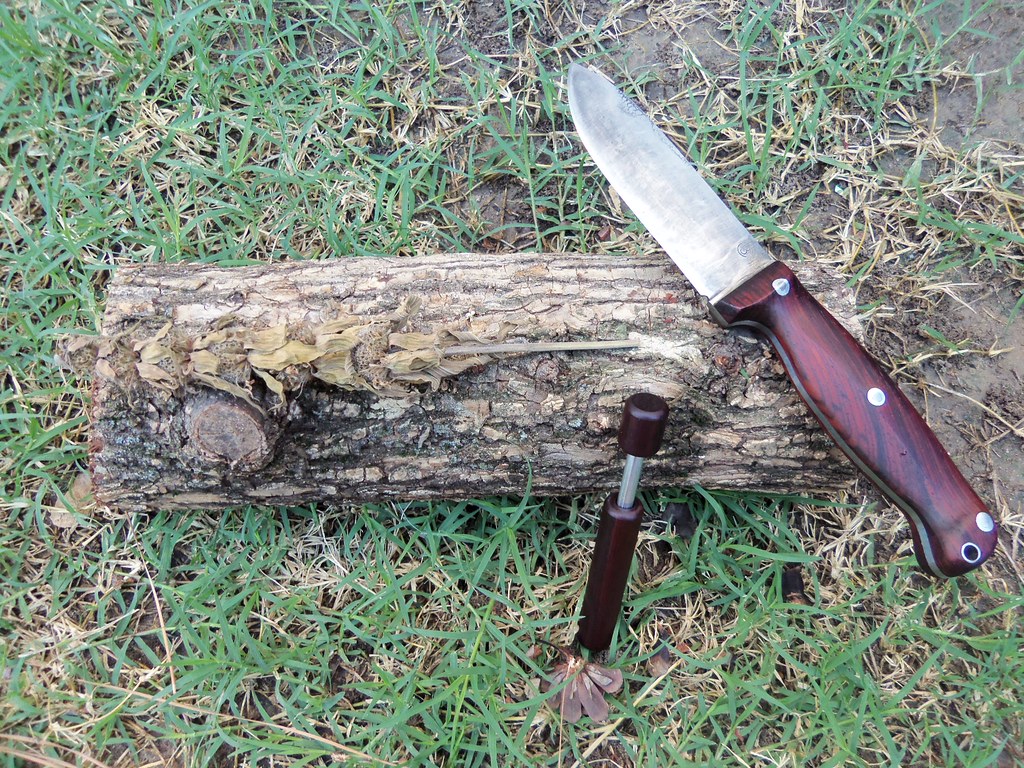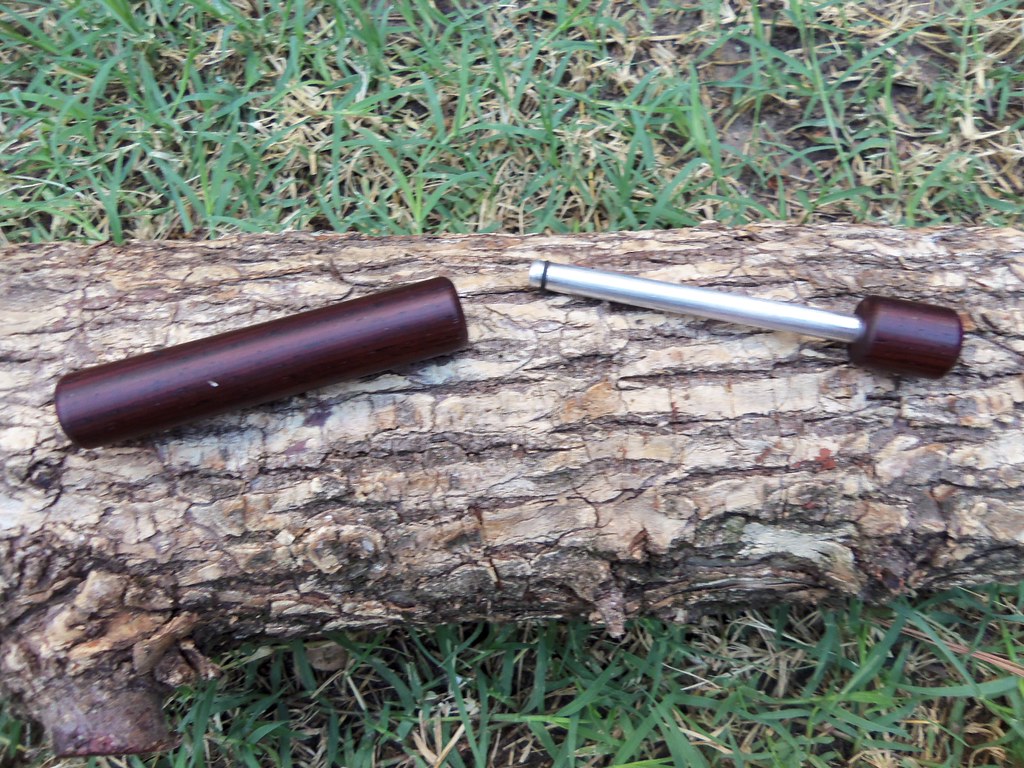I went to my local stomping grounds and picked up 5 different things that I can easily find pretty much any time I'm out. And these things I can start a fire with my ferro rod no problem. So I wanted to see the results with the fire piston. From left to right: Pine needles, Pine bark, Pine cone, Cedar bark, and a grass/weed. (that I don't know the name of but is everywhere here.)
As I go through this I know my fire piston experience is just beginning so I don't want to give the idea that they don't work. I simply want to see if I can get them to work with relative ease and again to see how viable an option it would be to carry with you. First up is the Pine needles
I cut of pieces of both the end and base of the pine needle and tried 25 pumps with each. No smoke, no burn marks, the fire piston end did not even feel hot at all. At this point the thing I am failing to do is get enough heat generated to even come close to making an ember. I was hitting the piston hard and fast and don't know how I could have done it any quicker. The o-ring has a good seal as you can feel the pressure building and can't get it past a certain point without a decent amount of force. So maybe it's the wood source not working...
on to the next one, Pine bark
Same results, 25 pumps, nothing. On to the next one, Cedar bark
I had high hopes for this one thinking it was the closest to paper and might burn the easiest. It was very dry, but still not even close, again the end of the piston is not even warm to the touch. I have to imagine if there was heat being generated the piston end would atleast feel warm or hot to the touch.
On to the next one, Pine cone
25 pumps and again I failed. And the last one, Grass/Weed
For this one I cut off a piece of the stem which had the hollow cavity with the inner paper-like material. I also tried pieces of the dried buds that looked good as well. 25 pumps, No luck, not even close.
Well this was my first attempt with a fire piston but I have to say I am not impressed. Simply because other options on the market are much easier and effective for getting your fire started with natural tinder's in your area. The whole point of this for me was to see if it would be a better option to carry over my ferro rod. And for me, it is not.







A couple years ago during a White Elephant gift exchange I received a fire pistol kit. I couldn't for the life of me ever get it to work. The piston no matter how much I lubed it or slammed it down and what not...would never go all the way in. I think the margin for error in these being able to let some air escape...so you can fire it all the way is very small and leads to many dud pistons.
ReplyDeleteYeah I'm not too experienced with them either. I talked to some guys and got some tips and this piston did get charcloth to ignite for some of the others in the passaround. So the piston itself does work. I just didn't want to use charcloth as I never carry it and we already knew this piston worked with charcloth. Just wanted to see how versatile it would be. If you dunked yourself in water in freezing conditions I don't think you could use a fire piston to light a fire fast enough to save your life.
DeleteGreat idea to test it out on the typical materials in your area... it's good to see some practical testing of tools. Thanks for the review and write-up!
ReplyDeleteI know where you're coming from. I've been experimenting with flint and steel lately, and have realized that it's not easy to use natural materials as they are found in nature with the flint and steel. All kinds of preparation are needed first (at least with horses hoof fungus). This doesn't make it very attractive to me. Not because I'm lazy and don't want to do the work, but because I want something that's versatile and not too convoluted. I think I'll stick with matches and a ferro rod for most of my firelighting. :)
ReplyDeleteAnyway, thanks for sharing your testing experience with us!